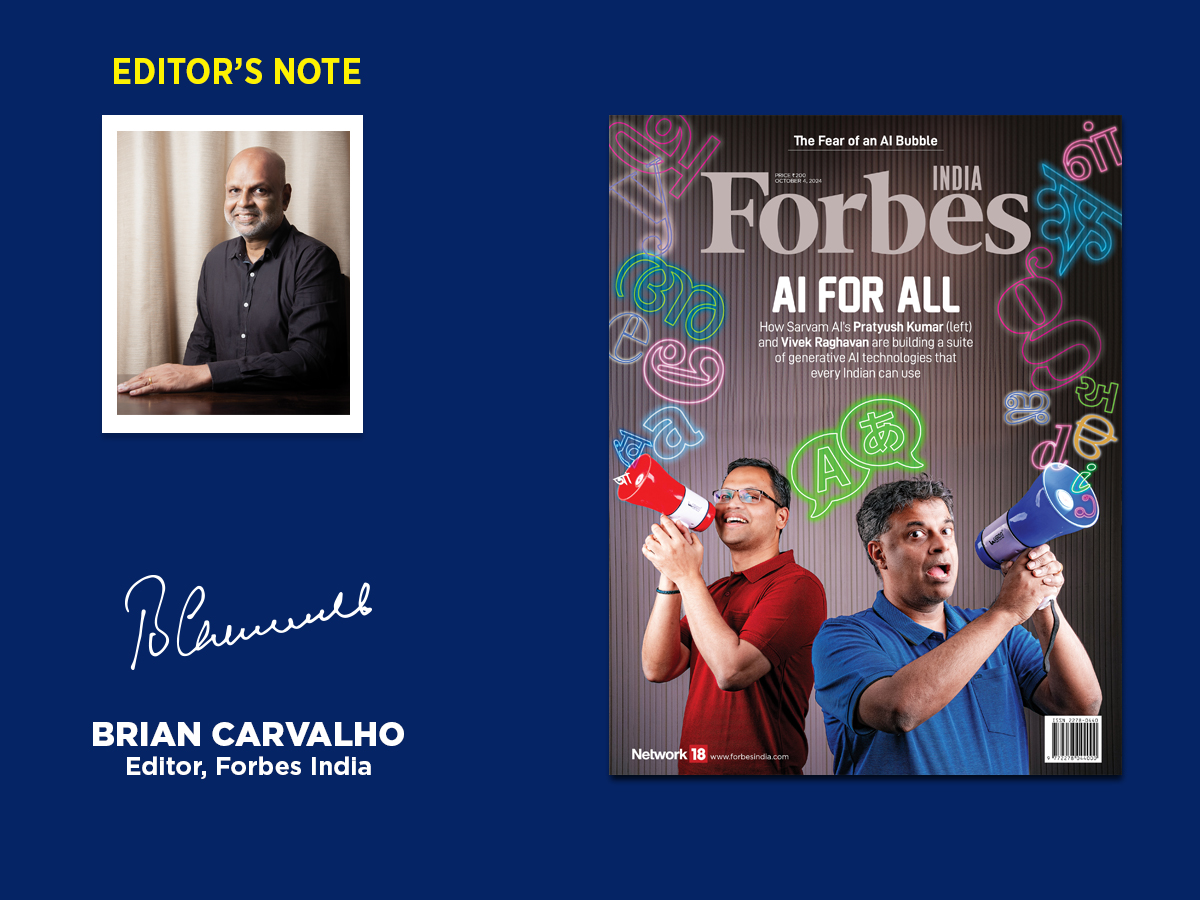AI in the real world
As the artificial intelligence (AI) race heats up, we dive deep into the companies making a real difference in the real world

Picture this: You’re an Indian multinational corporation with a massive customer and employee base that’s culturally diverse—as well as linguistically. For instance, you may have Afrikaans-speaking customers in South Africa or Catalan-speaking employees in Spain—or you may have both customers and employees in China, where Mandarin is the most spoken language.
Now switch the situation around, and picture that you’re a global mega-corporation that has identified India as a key market. So far, you’ve been largely present in the English-speaking parts of the world. Yes, English is spoken in India, but then so are some 450 languages, depending on which region you set up a factory or open shop. And like you have Spanglish in the United States—a blend of English and Spanish words and grammar—you have Hinglish spoken across a country in which perhaps Hindi may be the most spoken language. How do you cope?
This edition is a special issue on the rather scrumptious flavour of a protracted season: Artificial intelligence (AI). Tech & Innovation Editor Harichandan Arakali’s cover story on Sarvam AI decodes how an entity that has raised $53 million so far, is building solutions that have voice, communication, languages and dialects at their cor-e. As Arakali puts it: “An important aspect of Sarvam’s strategy is to cater to the linguistic diversity of India…”
What sets Sarvam apart from many other language AI startups is that it is working on building its own foundation-level AI tech; this includes the core elements of their own generative AI system like algorithms, architectures, training techniques and curated data sets. This will help Sarvam build its own generative AI tech on which others too can build useful applications. For more on Sarvam’s voice-based tools—that include models for translation, speech recognition and speech synthesis—don’t miss ‘All AInclusive’ on page 26.
Both Indian and foreign companies with aspirations of penetrating deep into India’s small towns and villages can benefit from such solutions. Leading teams that speak different languages can now be less challenging as AI can come to the rescue if, as a leader, you don’t speak the language that your team speaks with their customers. It’s a bit like, say, an Italian football manager in England’s Premier League (PL)—in which most managers are not English—finding a way to communicate with players from different parts of the world.
To be sure, AI isn’t about just language and translation. For instance, sticking with football, Google DeepMind Technologies Ltd, a British-American AI research lab and a Google subsidiary, introduced TacticAI earlier this year. TacticAI is an AI system that can provide coaches tactical insights on corner kicks through predictive and generative AI. Google DeepMind scientists developed and evaluated TacticAI along with elite coaches of PL team Liverpool. They say that TacticAI’s suggestions were preferred 90 percent of the time over tactical setups seen in practice.
Back in India, a rash of startups is focussed on diverse AI use cases to reach every citizen. People+ai, an initiative of Nandan and Rohini Nilekani’s EkStep Foundation, is focussed on incubating population-scale ideas. These include projects from one aimed at fast-tracking green building certifications and another to help the hearing impaired communicate better with AI access. For more on the People+ai big picture, Arakali’s ‘All for AI, AI For All’ is a must read.
Like with all booms, AI is attracting billions in investments and valuations are shooting through the roof. And, like with all booms before, there will be pretenders who will be left behind. Neha Bothra separates the froth from the potential in ‘Tipping Point’.
Brian Carvalho
Editor, Forbes India
Email: Brian.Carvalho@nw18.com
X ID: @Brianc_Ed
(This story appears in the 04 October, 2024 issue of Forbes India. To visit our Archives, click here.)















